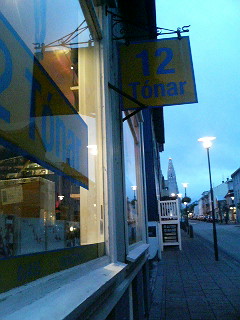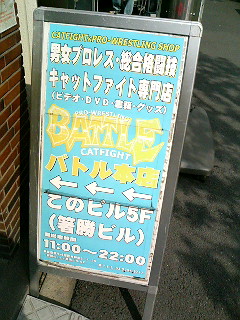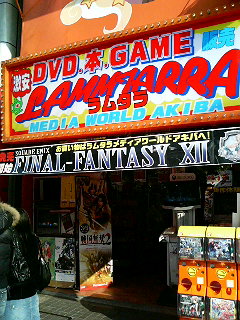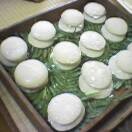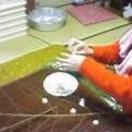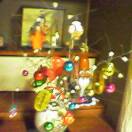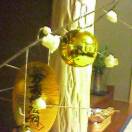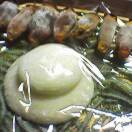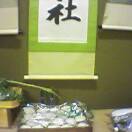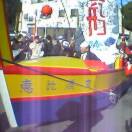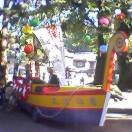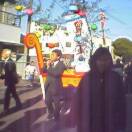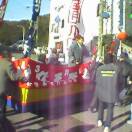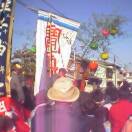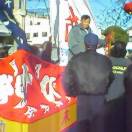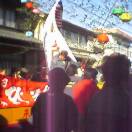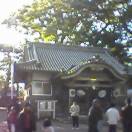Have you ever read a haiku poem? Not only are they fascinating compositions in themselves, as fragile as a cherry blossom, but they also open a window into the culture and the consciousness of the Japanese people.
For those who don't know, haiku comprise three nonrhyming lines of five, seven and five syllables. To our Occidental mind, they appear too fleeting and incomplete. We feel that there should be something more substantial. If we think Orientally, however, we will realize that they reveal something less... that is, the vacuum which encapsulates the core of the Japanese experience. Just like the empty gestures of the tea ceremony (茶道), they condense the essential nothingness of the Universe. This is the original meaning of the "Floating World", in my opinion at least.
The following haiku, by Matsuo Basho (松尾 芭蕉) is said to be one of the most profound achievements in Japanese literature, but is only seven words long:"Furuike ya!
Kawazu tobikomu
Mizu no oto."("Oh -- ancient pond!
A frog jumps in,
The sound of water.")
It should be noted that the "ya" is not even a real word, and it is merely deployed as a "state breaker", a crack of Zen revelation. I studied quite a few other haiku today and most of them were deceptively simple, but yet deeply mysterious at the same time. They make me wonder about how the same patterns coil round and round and in upon themselves, conchstyle. In Europe landscaping generally entails elaborate grounds with avenues of grand elms; in Japan the traditional garden is just a raked expanse of gravel rimmed by midget brutally pruned bonsai trees. Haiku are the bonsai of the poetry world, you might say -- severely pruned and bare.
A more contemporary state breaker can be heard in the song We're All Water, written and sang by Yoko Ono, and released on John Lennon's protest album, Some Time in New York City. Ono might be a terrible singer and the whole production is shambolic, but the curious structure of the piece redeems it. Each verse is like a haiku, with three lines of five or seven syllables each, for example this one:
"There may not be much difference
Between Manson and the Pope,
If we press their smile..."
Three is not a particularly rhythmic number at the best of times, at least on a Rock record, but here it lends an exotic, enigmatic quality. Listening to Ono's song, you might find yourself hanging on, waiting for the missing fourth line. Have the courage to let go, however, and you could fall into an abyss, one that you never even noticed there right before your feet... (For more of my discoveries regarding manifestation and the void, click here.)


